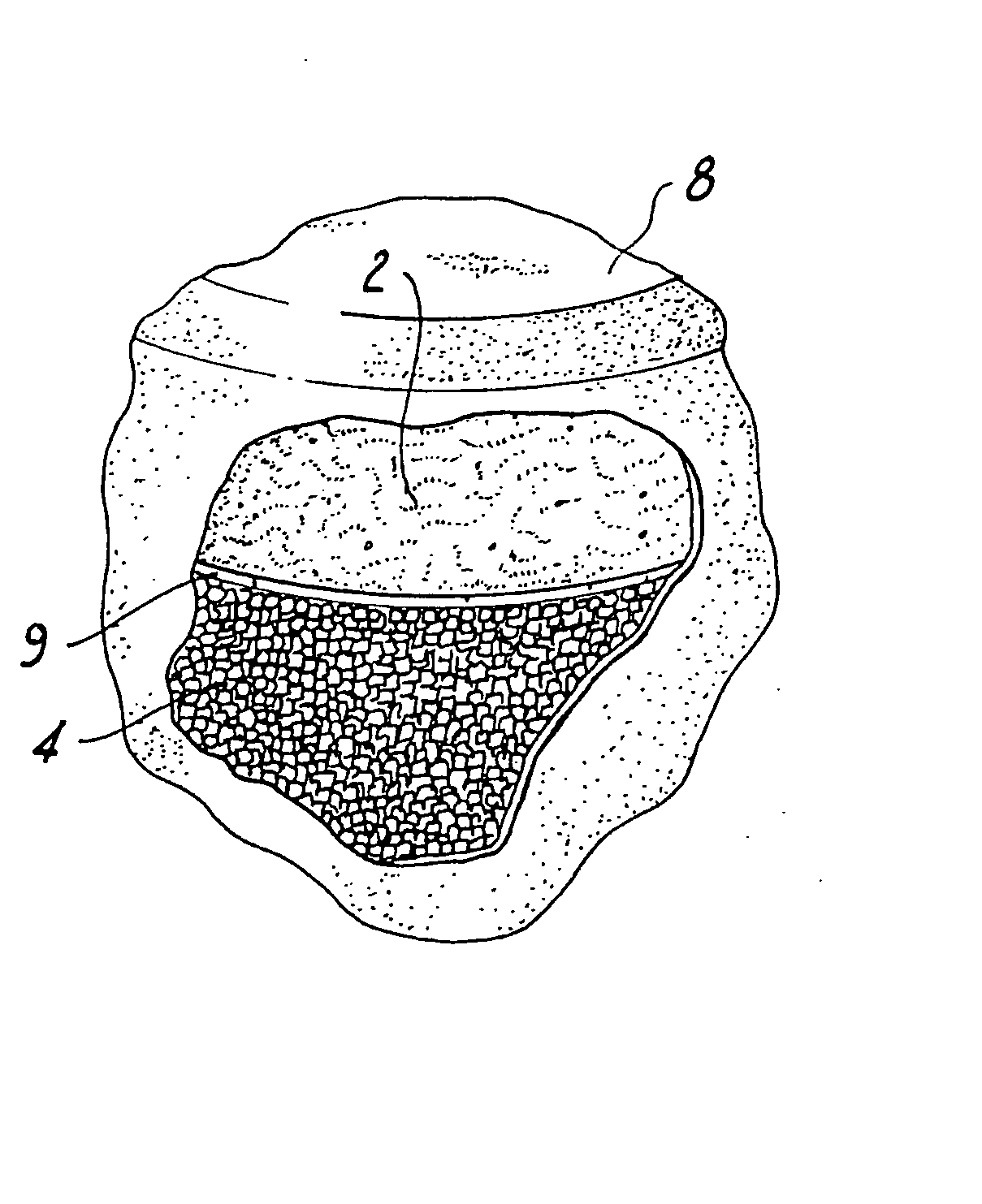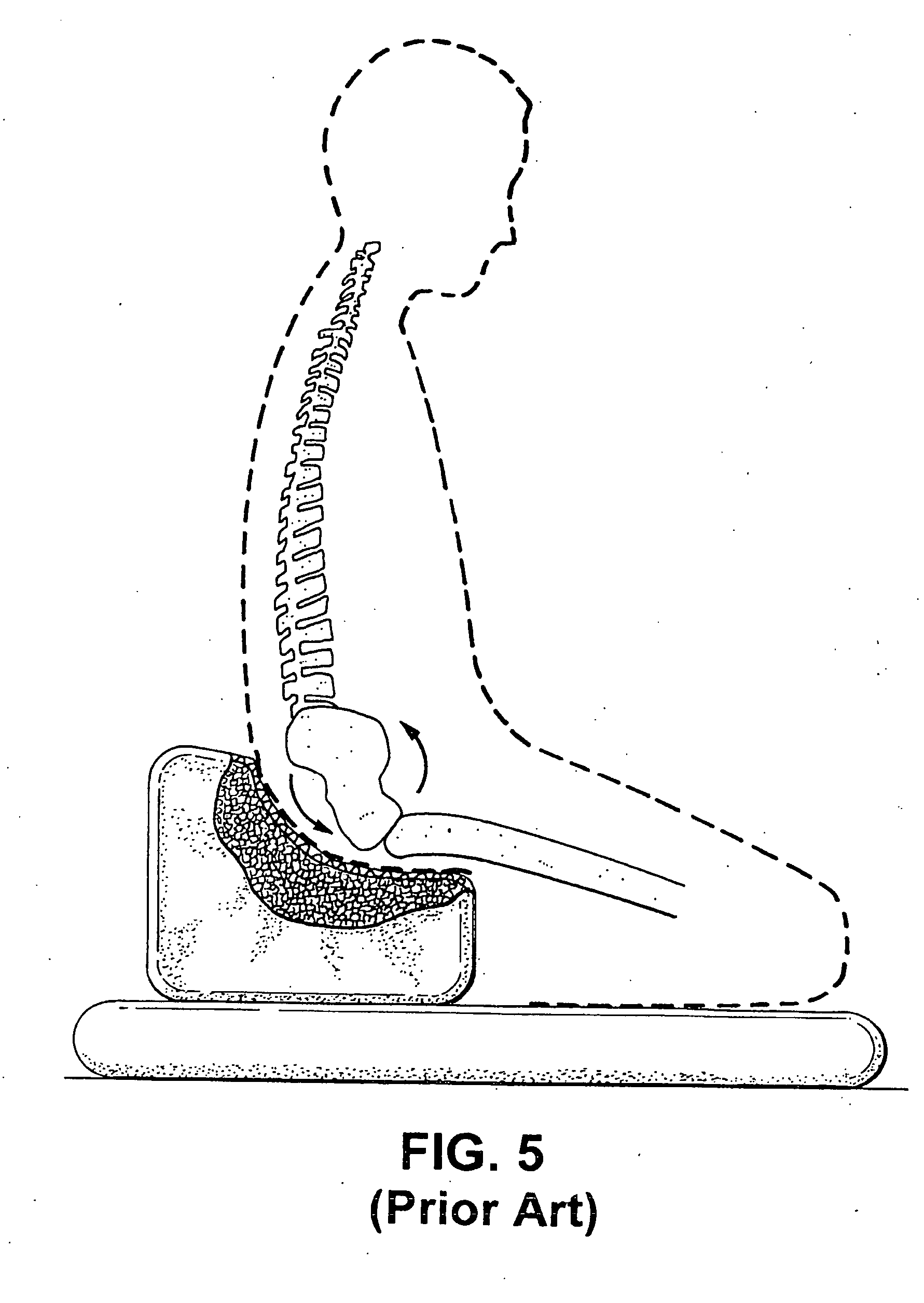Meditation support
a technology for supporting and meditating, which is applied in the field of meditating supports, can solve the problems of meditator's knees pressing against the hard floor, mats eventually compressing, and becoming thin, so as to avoid stress and pain
- Summary
- Abstract
- Description
- Claims
- Application Information
AI Technical Summary
Benefits of technology
Problems solved by technology
Method used
Image
Examples
Embodiment Construction
[0035] As shown in FIGS. 1-4 and 6, the present disclosure relates to mediation sitting cushions and mats, such as sitting cushion 1 and mat 10, individually or in combination, which allow the user to meditate in comfort and avoid the stress and pain often caused by previously known types of prior art buckwheat cushions and cotton mats, shown in FIG. 5, especially for those who meditate for great lengths of time.
[0036] Mediation sitting cushion 1 and mat 10 combine a slow recovery visco-elastic foam (“VEF”), having load deformation properties and densities, with buckwheat layers, or similar materials such as kapok, buckwheat hulls, or cotton batting support. Meditation sitting cushion 1 and mat 10 enable a person seated in traditional meditative positions to achieve a comfortable posture, regardless of the meditator's size or weight. Meditation sitting cushion 1 and mat 10 also allow people who often have no other available venue to meditate in the traditional cross-legged or kneel...
PUM
 Login to View More
Login to View More Abstract
Description
Claims
Application Information
 Login to View More
Login to View More - R&D
- Intellectual Property
- Life Sciences
- Materials
- Tech Scout
- Unparalleled Data Quality
- Higher Quality Content
- 60% Fewer Hallucinations
Browse by: Latest US Patents, China's latest patents, Technical Efficacy Thesaurus, Application Domain, Technology Topic, Popular Technical Reports.
© 2025 PatSnap. All rights reserved.Legal|Privacy policy|Modern Slavery Act Transparency Statement|Sitemap|About US| Contact US: help@patsnap.com



